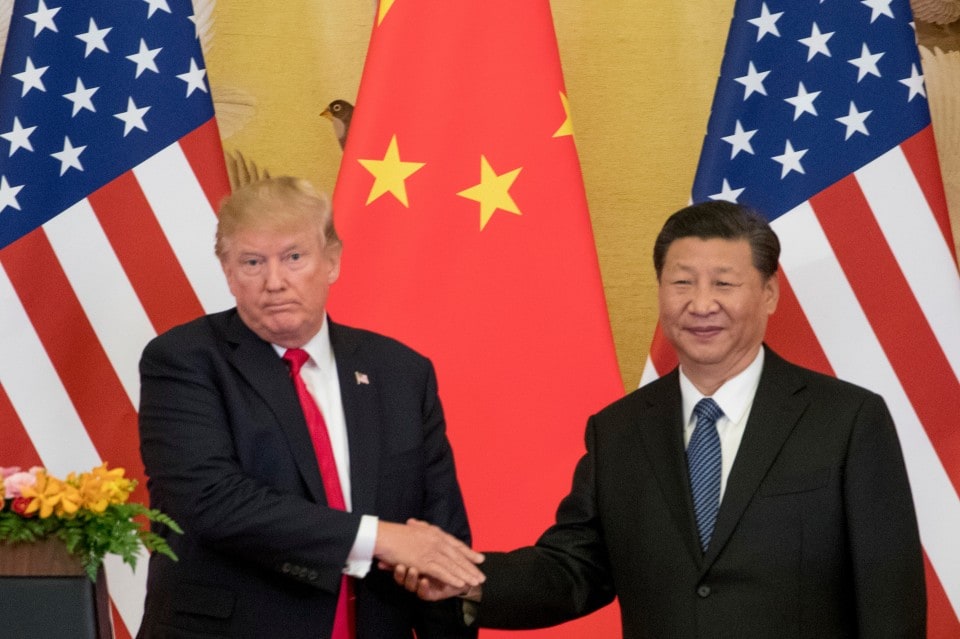Kevin Rudd was Australia’s 26th prime minister. He is currently president of the Asia Society Policy Institute.
President Donald Trump’s recent Asia trip casts further doubts about America’s long-term standing and commitment in the region. In particular, his “America first” speech at the Asia-Pacific Economic Cooperation summit in Vietnam cast a shadow on America’s willingness to cooperate with Asian allies.
But Trump does get credit for at least showing up. His visits to Tokyo and Seoul were positive, and his strong address to the South Korean National Assembly rightly emphasized solidarity with an ally rather than warning of imminent armed conflict. Communication channels between Washington and Beijing on North Korea are open. Bilateral face time was important in Hanoi, as was attending the Asia-Pacific Economic Cooperation summit in Danang, which allowed Trump to build some personal ties where few previously existed. Normalizing relations with the Philippines, despite President Rodrigo Duterte’s sanctioning of extrajudicial killings, will strengthen America’s alliances in the region.
Still, the future of American economic engagement with the region is bleak. The failure of both America’s Republicans and Democrats to embrace the Trans-Pacific Partnership is a tragedy for the United States. The TPP would have enhanced America’s trade and investment interests in an economic region that’s growing fast and increasingly dominant in the world. But the double tragedy is that there is nothing yet that will replace it. The administration’s vaguely worded “free and open Indo-Pacific” shows all the hallmarks of a slogan in search of substance, rapidly cobbled together on the eve of this visit. This is not a substitute for the TPP, which was the product of six long years of work between a dozen governments with vastly different trading, investment and economic systems.
Instead, the U.S. has ceded regional economic leadership separately to China and Japan for the foreseeable future at least. Japan has led the negotiating effort to hold together the so-called “TPP 11,” which refers to the 11 countries abandoned by the U.S. that are still fighting for a regional trade deal, presumably in the hope that a future U.S. administration might join. China continues to champion the less ambitious (at least in terms of trade liberalization, if not in geopolitical terms) Regional Comprehensive Economic Partnership. Either way, the U.S., which has championed the economic liberalization of Asia since the end of the Vietnam War, has gone into strategic hibernation.
We’re now beginning to see the implications for the region of America’s effective withdrawal from economic leadership. China’s geo-economic footprint in Asia is already dominant, and the uncomfortable fact is that Southeast Asia has already begun to swing toward China’s strategic orbit. The outsized Chinese influence in the region means that Beijing will more often set the “rules of the road” for regional economic integration. The result is that over time, we may well see America become an “unbalanced superpower,” with a powerful regional military presence in Asia but with a minor role in the region’s burgeoning economic future.
On regional security, there is still no solution in sight for the North Korea nuclear dilemma. North Korean leader Kim Jong Un remains committed to nuclear missile programs that he considers essential for the survival of his regime. Trump sees those programs as crossing an American red line. Meanwhile, China may be working to convince the North to slow the pace of its tests, the last of which was back in mid-September.
China seems to be trying to prevent North Korea from developing an intercontinental ballistic missile that could threaten the U.S. mainland at the same time as trying to persuade the U.S. to allow Pyongyang to retain its short and medium-range missile capabilities. But would such a deal be acceptable for Washington or its Asian allies? Those short and medium-range missiles can reach South Korea, Japan and perhaps even Guam. One thing is clear: the risk of armed conflict on the Korean Peninsula remains unacceptably high.
Beyond North Korea, there is also the question of how to manage the danger of a broader bifurcation of the region between Chinese and American spheres of influence. Such a process is inherently destabilizing. Indeed, regional governments are feeling the pressure to choose. A better approach would be to form a more resilient regional security architecture that escapes brittle, binary strategic choices.
Take the East Asia Summit, for example. It should evolve over time into a regional security forum for the future. Such a forum could, step by step, build confidence between all regional states (including China and the U.S.) — greater military transparency, greater collaboration on soft security challenges and, in time, developed habits and procedures for the peaceful resolution of regional disputes. This would not resolve all regional security tensions, of course. But it may help bring the temperature down at a time when the proliferation of flashpoints place the region’s future in jeopardy.
This was produced by The WorldPost, a partnership of the Berggruen Institute and The Washington Post.





